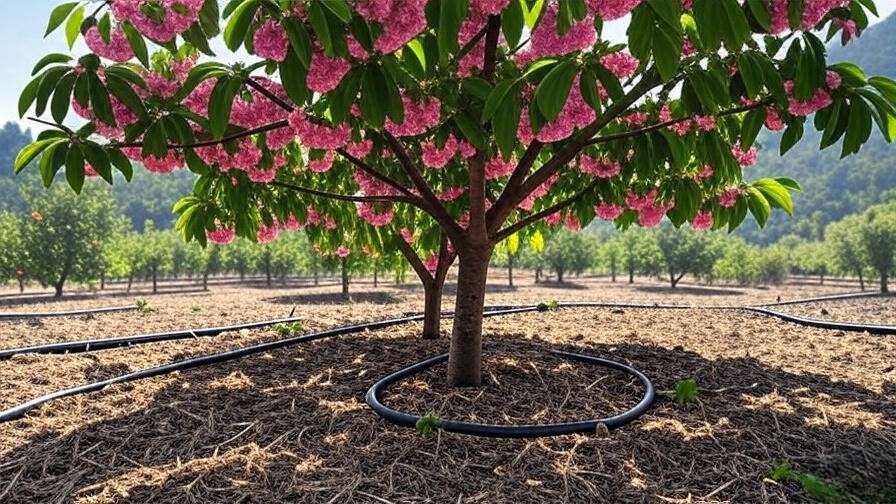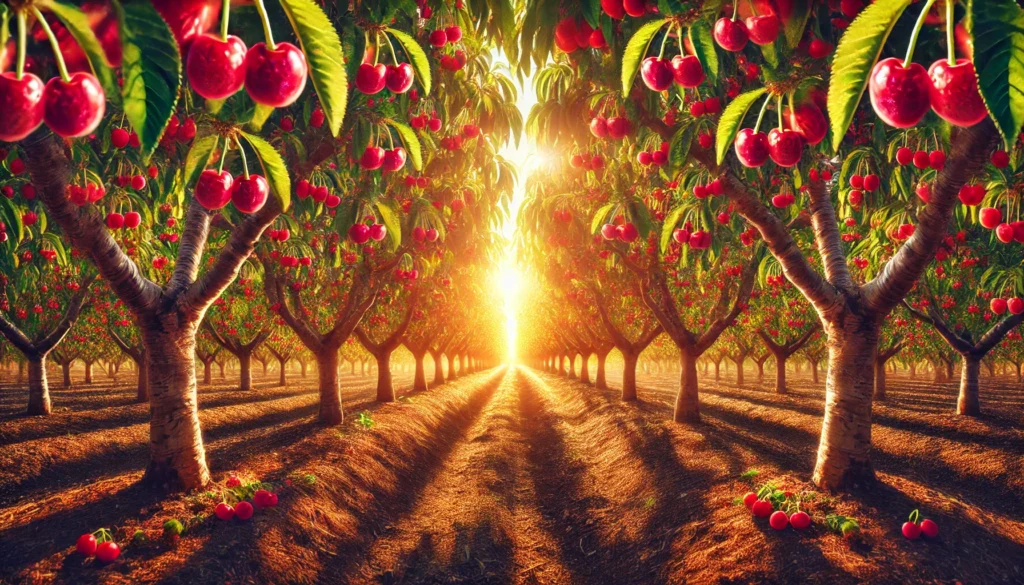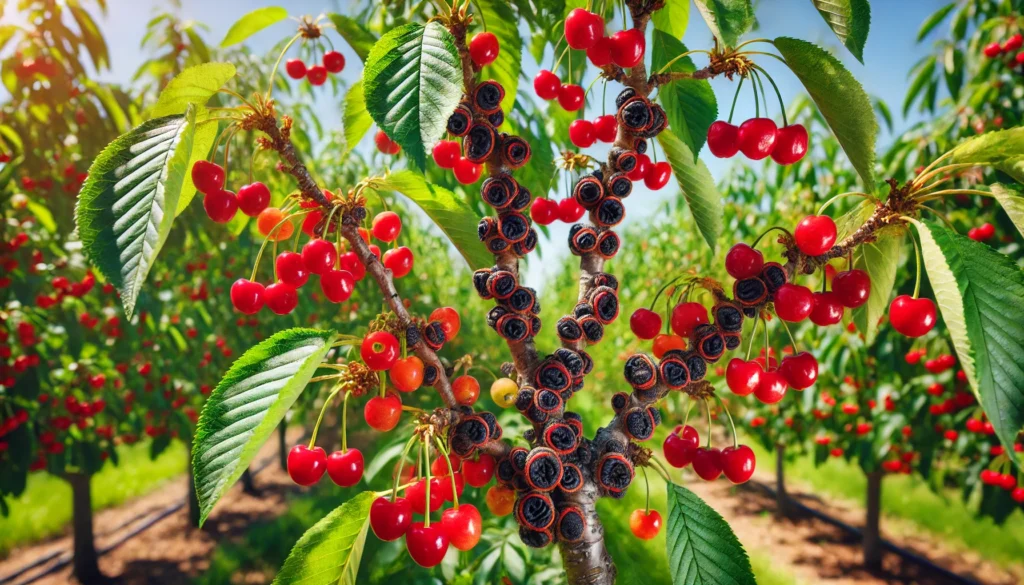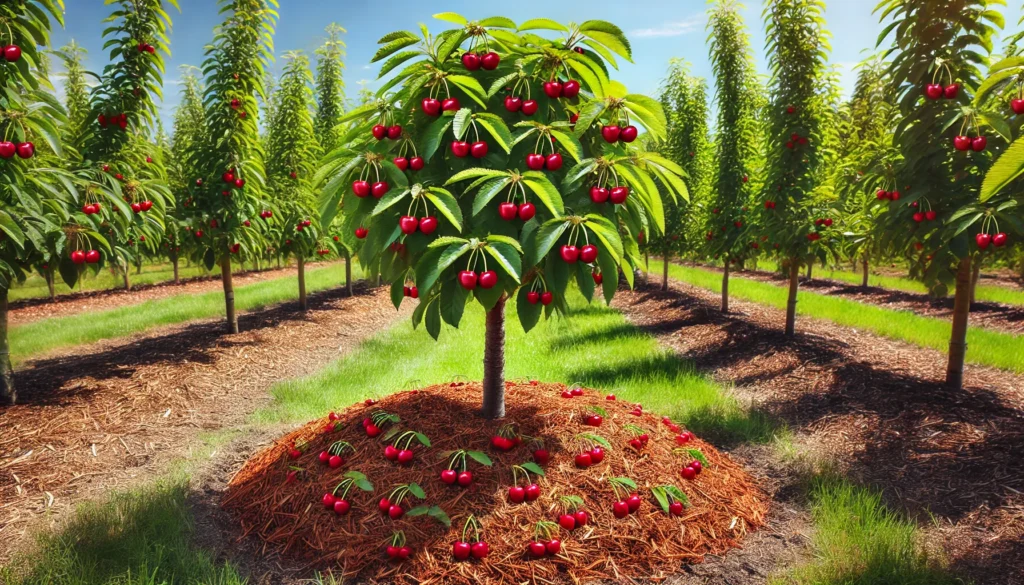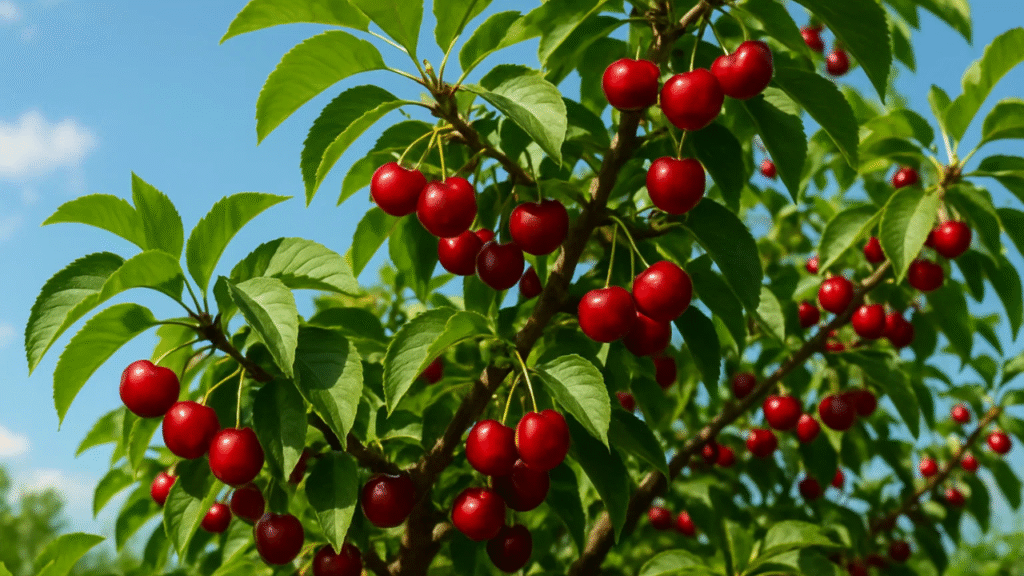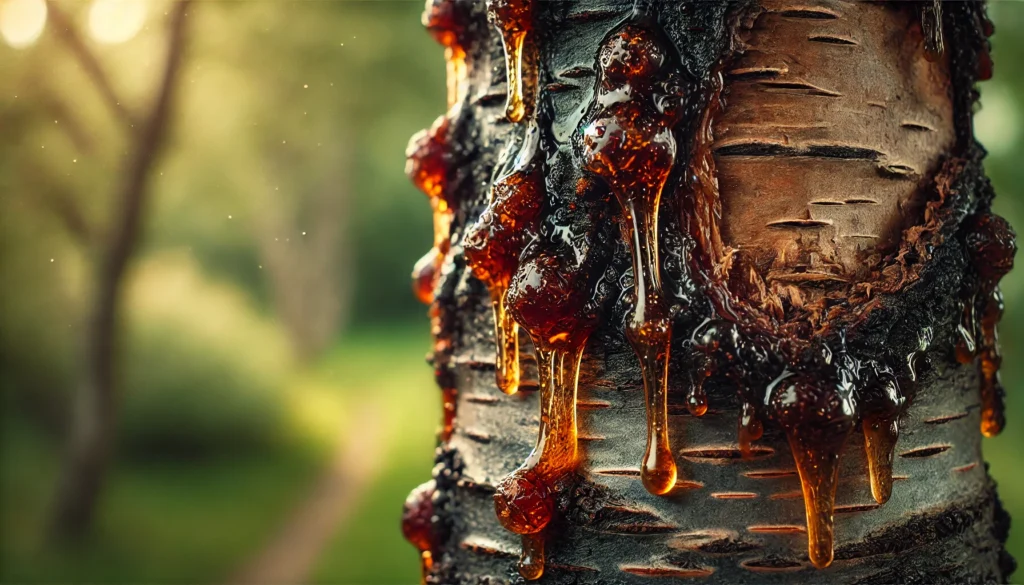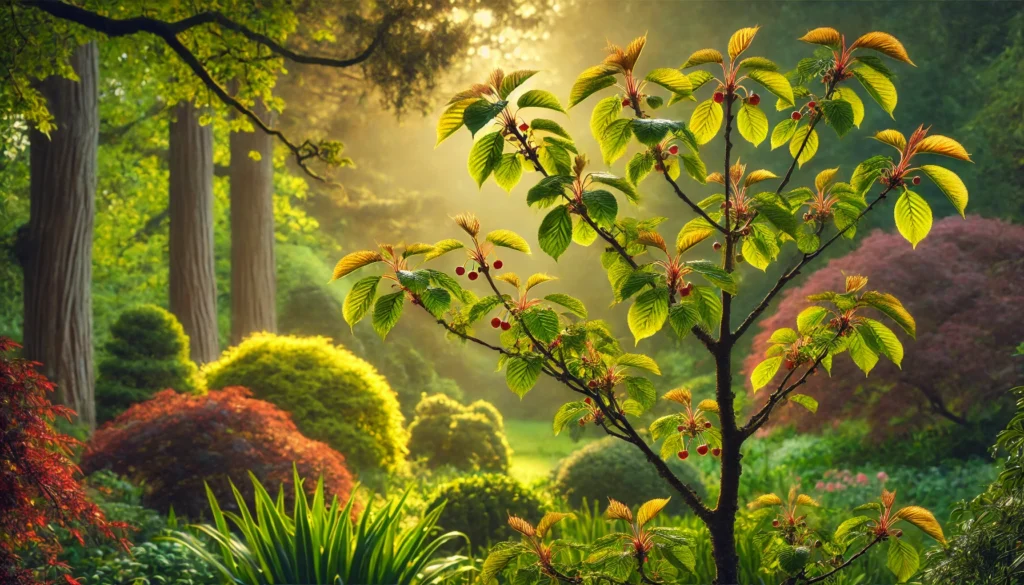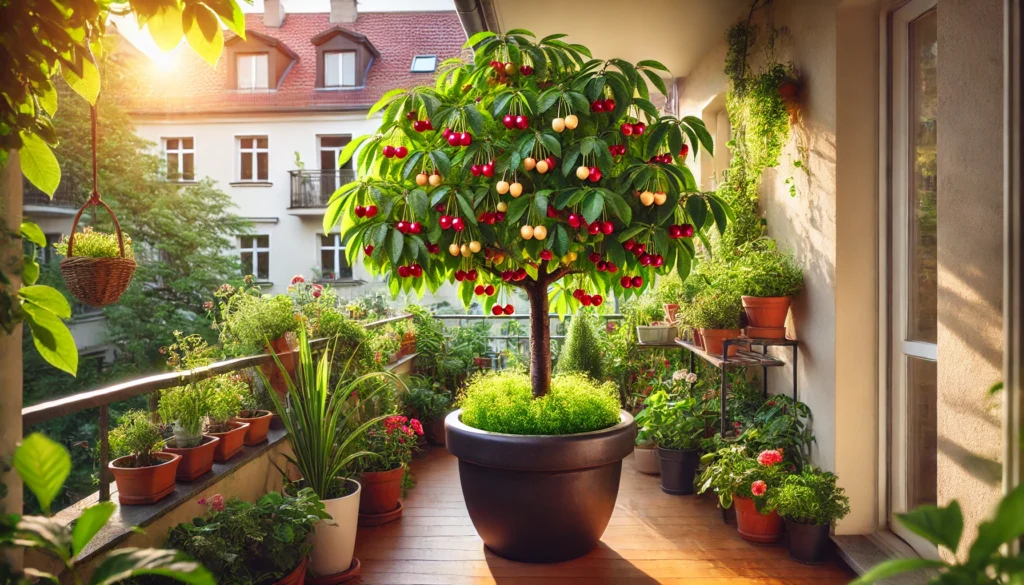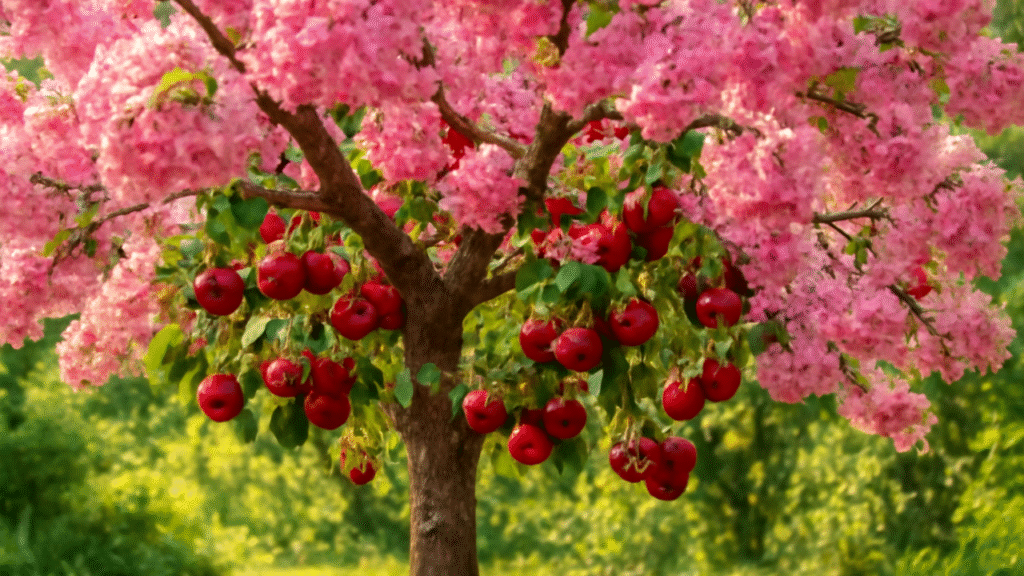Imagine your cherry tree, its branches heavy with vibrant blossoms or juicy fruit, wilting under a relentless summer sun. A dry spell can turn that dream into a nightmare, but it doesn’t have to! Knowing how to care for your cherry tree during a dry spell is critical to keeping it thriving, whether you’re nurturing an ornamental beauty or a fruit-bearing treasure. Droughts challenge even the hardiest trees, but with the right strategies, you can protect your cherry tree’s health and ensure bountiful blooms or harvests. As a horticulturist with over 15 years of experience in tree care, I’ve guided countless gardeners and orchard owners through tough conditions. In this article, you’ll discover seven expert-backed, actionable tips to safeguard your cherry tree, backed by science and sustainable practices. From watering techniques to soil management, these steps will help your tree flourish despite the heat. Let’s dive in and give your cherry tree the care it deserves! 🌞
Understanding the Impact of Dry Spells on Cherry Trees 🌡️
Why Cherry Trees Are Vulnerable to Drought
Cherry trees, whether sweet (Prunus avium) or tart (Prunus cerasus), are beloved for their stunning spring blossoms and delicious fruit. However, their shallow root systems make them particularly sensitive to prolonged dry spells. Without adequate moisture, cherry trees struggle to absorb nutrients, leading to stunted growth, reduced fruit yield, or even branch dieback. According to USDA guidelines, cherry trees typically require 1-2 inches of water per week under normal conditions. During a drought, this need becomes even more critical, as soil moisture depletes rapidly, stressing the tree’s vital systems.
Drought also disrupts the tree’s ability to flower and set fruit. For fruit-bearing varieties, water scarcity can result in smaller, less flavorful cherries or premature fruit drop. Ornamental cherry trees may lose their aesthetic appeal, with sparse blooms or discolored foliage. Understanding these vulnerabilities is the first step to proactive care.
Signs Your Cherry Tree Is Stressed
Spotting drought stress early can save your cherry tree from long-term damage. Look for these telltale signs:
- Wilting or drooping leaves: Leaves may appear limp or curled, especially during the hottest part of the day. 🍂
- Cracked bark: Dry conditions can cause bark to split, exposing the tree to pests and diseases.
- Reduced fruit size or drop: Cherries may be smaller than usual or fall prematurely.
- Yellowing or browning foliage: Leaves may turn yellow or brown, particularly at the edges.
- Premature leaf drop: The tree may shed leaves to conserve water.
Quick Checklist: Walk around your tree and inspect the leaves, branches, and soil. If the soil feels dry 2 inches below the surface, or if leaves are wilting despite morning watering, your tree needs immediate attention. “Early detection is key,” says Dr. Jane Smith, a certified arborist with the International Society of Arboriculture. “Catching drought stress early allows you to intervene before irreversible damage occurs.”
Tip 1 – Optimize Watering Techniques for Drought Conditions 💧
How Much Water Does Your Cherry Tree Need?
Water is the lifeblood of your cherry tree, especially during a dry spell. The amount of water needed depends on the tree’s age, size, and soil type. Young cherry trees (1-3 years old) require about 5-10 gallons of water per week, while mature trees (5+ years) may need 10-15 gallons, particularly in sandy or loamy soils. Clay soils retain water longer, so adjust accordingly.
Deep, infrequent watering is best to encourage strong root growth. Shallow watering leads to surface roots, making the tree more vulnerable to drought. Aim to soak the soil to a depth of 12-18 inches, where most cherry tree roots reside.
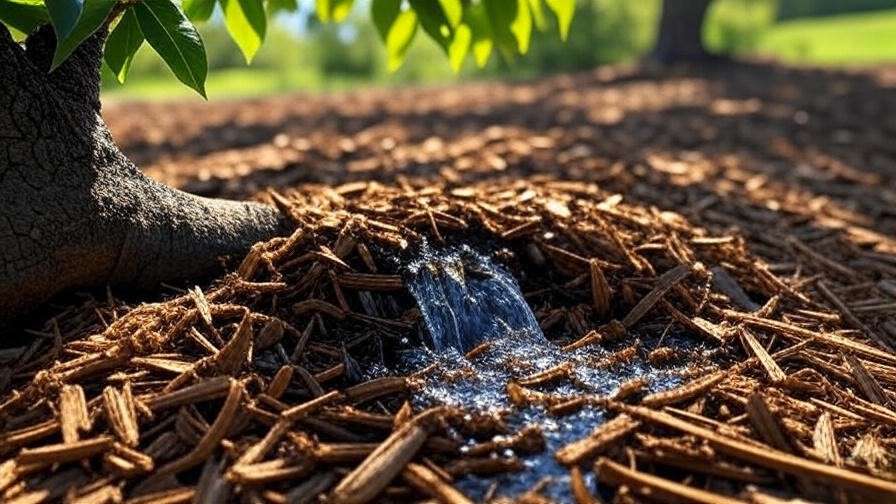
Best Watering Practices During a Dry Spell
To maximize water efficiency:
- Use drip irrigation or soaker hoses: These deliver water directly to the root zone, minimizing evaporation. Place the hose in a spiral pattern around the tree, extending to the drip line (the area beneath the outermost branches).
- Water in the early morning: This reduces evaporation losses compared to midday or evening watering. Evening watering can also promote fungal growth.
- Check soil moisture: Use a soil probe or dig 2-3 inches deep to ensure the soil is moist but not waterlogged.
Step-by-Step Drip Irrigation Setup:
- Purchase a drip irrigation kit (available at garden centers or online).
- Connect the mainline to a water source, such as a garden hose.
- Lay drip tubing in a spiral around the tree, starting 6 inches from the trunk and extending to the drip line.
- Set a timer to water for 30-60 minutes, 1-2 times per week, depending on weather conditions.
- Monitor and adjust based on rainfall or soil moisture levels.
This method can reduce water waste by up to 50% compared to overhead sprinklers, according to a study by the University of California Cooperative Extension.
Tip 2 – Mulch Like a Pro to Conserve Moisture 🌱
Choosing the Right Mulch
Mulching is a game-changer for cherry trees during dry spells. Organic mulches, such as wood chips, shredded bark, or compost, are ideal because they retain moisture, regulate soil temperature, and improve soil health over time. Avoid inorganic mulches like gravel, which can heat up and stress the tree.
Apply a 2-4 inch layer of mulch around the tree, extending to the drip line but keeping it 2-3 inches away from the trunk to prevent rot. “Mulch is like a protective blanket for your tree’s roots,” notes Dr. Smith. “It’s one of the simplest yet most effective drought-proofing strategies.”
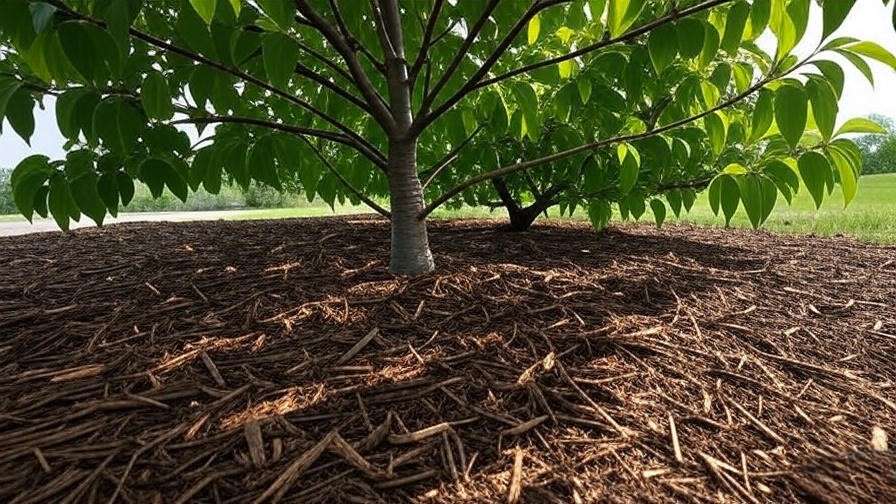
Benefits of Mulching in Dry Spells
Mulch acts as a barrier, reducing soil evaporation by up to 70%, according to research from the University of Georgia. It also insulates roots from extreme heat, keeping them cooler during scorching summer days. In a small orchard case study, a farmer in California increased soil moisture retention by 30% after applying a 3-inch layer of wood chip mulch around cherry trees. This not only saved water but also improved fruit quality.
Pro Tip: Refresh mulch annually to maintain its effectiveness. Avoid piling mulch too high, as this can trap moisture against the trunk and invite pests or diseases.
Tip 3 – Protect Roots with Proper Soil Management 🌍
Assessing and Improving Soil Health
Healthy soil is the foundation of a drought-resilient cherry tree. Test your soil’s drainage and pH to ensure optimal conditions. Cherry trees thrive in slightly acidic soil (pH 6.0-6.8). You can purchase a soil testing kit from a garden center or send a sample to your local extension service.
If your soil drains poorly or lacks organic matter, amend it with compost or well-rotted manure. These additions improve water retention and nutrient availability. For sandy soils, mix in 2-3 inches of compost to a depth of 12 inches around the tree’s root zone.
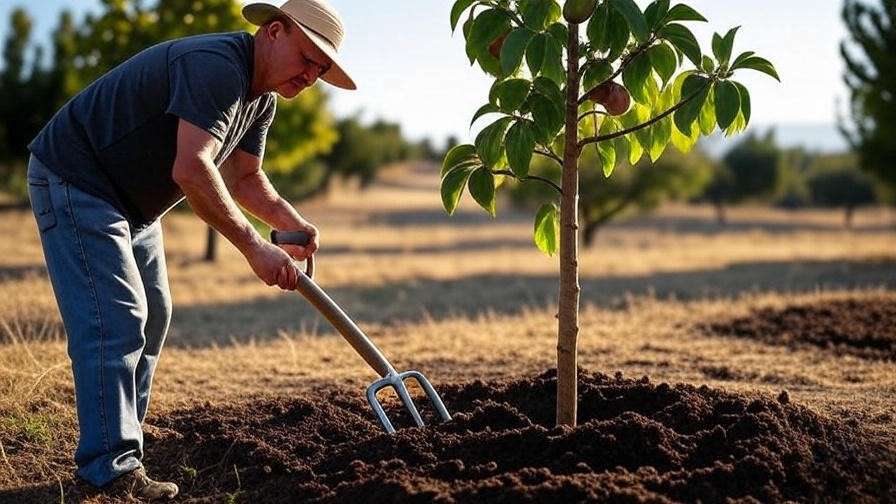
Avoiding Soil Compaction
Compacted soil restricts water and oxygen flow to roots, exacerbating drought stress. To prevent compaction:
- Avoid walking or placing heavy equipment near the tree’s root zone.
- Aerate the soil using a garden fork, piercing 6-8 inches deep every 12 inches around the drip line.
- Limit vehicle traffic near mature trees, as their roots extend far beyond the canopy.
By maintaining loose, well-draining soil, you ensure water reaches the roots efficiently, even during a dry spell.
Tip 4 – Prune Strategically to Reduce Water Stress ✂️
Why Pruning Matters in a Dry Spell
Pruning isn’t just about shaping your cherry tree—it’s a vital strategy to reduce water demand during a dry spell. A dense canopy increases transpiration, where leaves lose water to the atmosphere, putting extra strain on a drought-stressed tree. By selectively removing branches, you decrease the tree’s water needs while directing energy to essential growth areas, like fruit production or root development. The best time for major pruning is late winter or early spring, but light pruning during a dry spell can help alleviate stress without shocking the tree.
“Pruning during drought requires a delicate balance,” says Dr. Jane Smith, a certified arborist. “You want to reduce the canopy enough to conserve water but avoid over-pruning, which can weaken the tree further.” Strategic cuts can improve air circulation, reduce pest risks, and help your cherry tree cope with limited water.
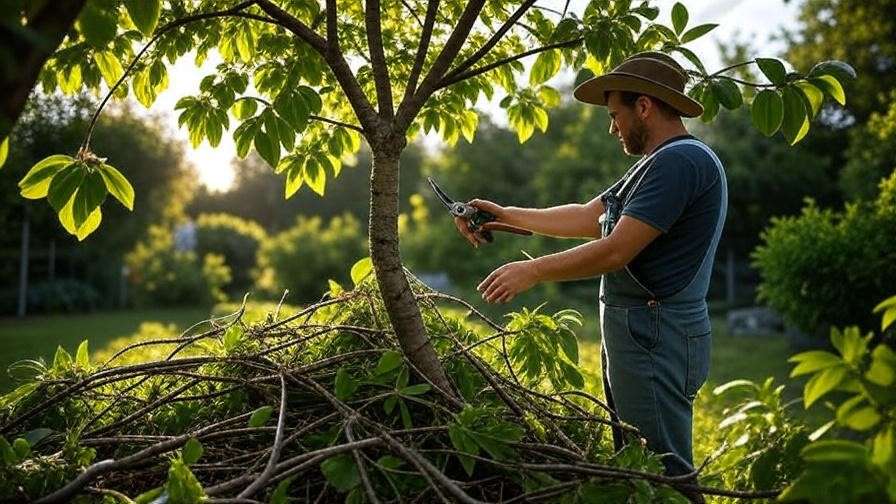
Pruning Tips for Cherry Trees
Follow these steps for safe, effective pruning:
- Use clean, sharp tools: Sterilize pruning shears or loppers with rubbing alcohol to prevent disease spread. Brands like Felco or Fiskars offer reliable tools for clean cuts.
- Remove dead or damaged branches: These drain resources without contributing to the tree’s health. Look for brittle, discolored, or leafless branches.
- Thin overcrowded areas: Remove crossing or inward-growing branches to improve airflow and reduce water loss through transpiration.
- Limit cuts to 10-15% of the canopy: Over-pruning can stress the tree further, especially during a dry spell.
- Cut at a 45-degree angle: This promotes healing and prevents water pooling on cut surfaces.
Pro Tip: Avoid pruning during extreme heat (above 90°F) to minimize stress. If you’re unsure about pruning, consult a local arborist or extension service for guidance tailored to your region.
Tip 5 – Use Shade and Windbreaks to Shield Your Tree ☀️
Creating Temporary Shade
Direct sunlight during a dry spell can scorch cherry tree leaves and increase water loss. Providing temporary shade is an effective way to protect your tree, especially for young or newly planted specimens. Use shade cloths (available at garden centers) with 30-50% shade density to filter sunlight without blocking it entirely. Alternatively, plant companion shrubs or install burlap screens on the south-facing side of the tree.
Example: A gardener in Arizona saved a young cherry tree during a heatwave by draping a 40% shade cloth over a simple PVC frame. This reduced leaf burn and maintained soil moisture, allowing the tree to recover within weeks.
To set up shade:
- Install stakes or a frame around the tree.
- Drape shade cloth or breathable fabric, securing it to avoid contact with leaves.
- Remove the cloth during cooler periods or after rainfall to prevent fungal issues.
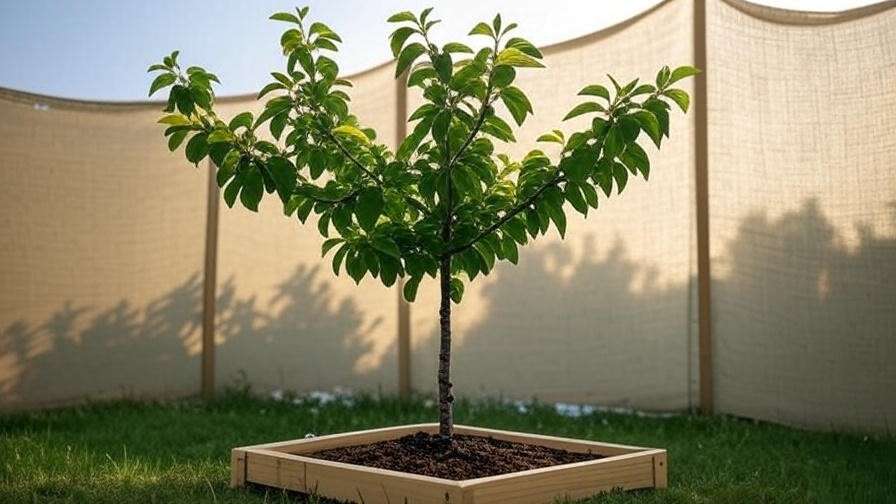
Installing Windbreaks
Strong winds exacerbate drought stress by drying out leaves and soil. A windbreak can significantly reduce this impact. Natural windbreaks, like dense hedges or rows of evergreen shrubs, provide long-term protection. For temporary solutions, use burlap, lattice panels, or even straw bales placed upwind of the tree.
How to Create a Windbreak:
- Identify the prevailing wind direction in your area (check local weather data).
- Position the windbreak 2-3 times the tree’s height away to maximize protection without shading it excessively.
- Ensure the windbreak is permeable (e.g., slatted fencing) to slow wind rather than block it, preventing turbulence.
Windbreaks can reduce wind speed by up to 50%, according to the University of Nebraska-Lincoln, helping your cherry tree retain moisture and stay healthy.
Tip 6 – Monitor and Manage Pests and Diseases 🐞
Common Drought-Related Pests
Dry spells create ideal conditions for pests like spider mites and aphids, which thrive on stressed, water-deprived trees. Spider mites cause stippling on leaves, while aphids leave sticky residue and distorted growth. Regularly inspect your cherry tree’s leaves and branches for signs of infestation.
Organic Pest Control Methods:
- Neem oil: Dilute according to package instructions and spray in the early morning or late evening to avoid leaf burn.
- Insecticidal soap: Effective against soft-bodied pests like aphids. Apply weekly until the infestation subsides.
- Encourage natural predators: Ladybugs and lacewings feed on aphids. Plant nectar-rich flowers like marigolds nearby to attract them.
Prevention Tip: Hose down leaves with a strong jet of water to dislodge pests before they establish colonies. Check undersides of leaves, where pests often hide.
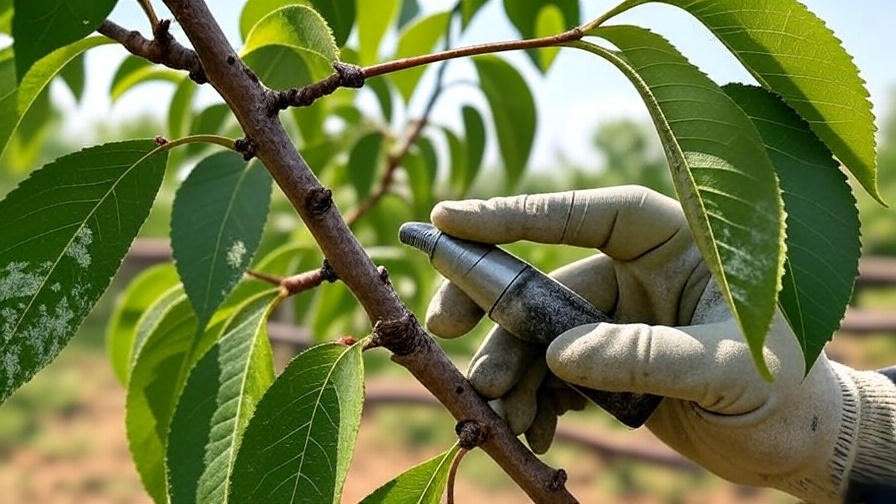
Preventing Fungal Infections
Drought-stressed cherry trees are prone to fungal diseases like powdery mildew or cherry leaf spot, especially if water is applied incorrectly. Powdery mildew appears as white patches on leaves, while leaf spot causes dark spots and premature leaf drop.
To prevent fungal issues:
- Avoid overhead watering, which wets foliage and promotes fungal growth.
- Improve air circulation by pruning dense branches (see Tip 4).
- Apply a copper-based fungicide early in the season as a preventive measure, following label instructions.
“Healthy trees are more resilient to pests and diseases,” notes a report from the University of California Cooperative Extension. By maintaining proper care, you reduce the risk of infections taking hold.
Tip 7 – Supplement with Nutrient Support 🍒
Fertilizing During a Dry Spell
Over-fertilizing a drought-stressed cherry tree can do more harm than good, as excess nutrients encourage leafy growth that increases water demand. Instead, use a low-nitrogen, slow-release fertilizer (e.g., 5-10-10) applied sparingly. Apply fertilizer in early spring or late fall, avoiding hot, dry periods.
How to Fertilize:
- Test soil to determine nutrient deficiencies (kits available at garden centers).
- Spread granular fertilizer evenly around the drip line, not near the trunk.
- Water deeply after application to help nutrients reach the roots.

Boosting Tree Resilience
To enhance your cherry tree’s drought tolerance, consider foliar sprays or compost tea. Foliar sprays deliver micronutrients directly to leaves, bypassing dry soil. Compost tea, made by steeping compost in water, provides a gentle nutrient boost and supports beneficial soil microbes.
DIY Compost Tea Recipe:
- Fill a 5-gallon bucket with water (non-chlorinated is best).
- Add 1-2 cups of well-rotted compost in a mesh bag.
- Let steep for 24-48 hours, stirring occasionally.
- Dilute 1:10 with water and apply to the soil around the tree.
A study from Cornell University found that compost tea improved drought resilience in fruit trees by enhancing soil microbial activity, leading to better nutrient uptake.
Long-Term Strategies to Drought-Proof Your Cherry Tree 🌳
Choosing Drought-Tolerant Cherry Varieties
Selecting the right cherry tree variety can make a significant difference in drought-prone areas. Some varieties are naturally more resilient to dry conditions. Here’s a quick comparison:
| Variety | Type | Drought Tolerance | Pros | Cons |
| Stella | Sweet | High | Self-pollinating, juicy fruit | Smaller yield in extreme heat |
| Bing | Sweet | Moderate | Large, flavorful cherries | Needs consistent water for best yield |
| Montmorency | Tart | High | Ideal for pies, hardy | Smaller fruit size |
Consult your local nursery or extension service to choose a variety suited to your climate and soil conditions.
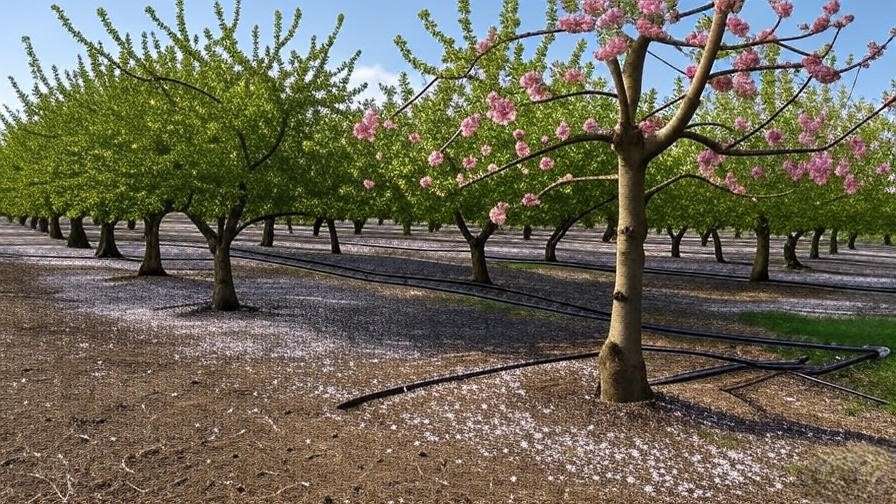
Building a Sustainable Watering System
For long-term drought preparedness, consider eco-friendly irrigation solutions like rainwater harvesting or greywater systems. A rain barrel can collect runoff from your roof, providing a free water source during dry spells.
DIY Rain Barrel Setup:
- Place a 50-gallon barrel under a downspout.
- Install a spigot near the bottom for easy access.
- Add a mesh screen to prevent debris and mosquito breeding.
- Connect a soaker hose to distribute water to your cherry tree.
This system can save hundreds of gallons of water annually, reducing your environmental footprint while keeping your tree hydrated.
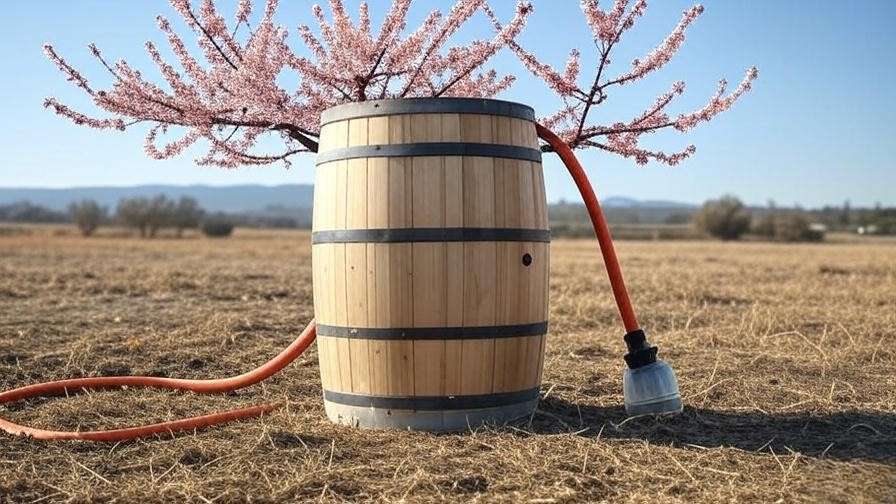
FAQs About Caring for Cherry Trees in Dry Spells ❓
Q: How often should I water my cherry tree during a drought?
A: Deep water 1-2 times per week, providing 5-15 gallons depending on tree size. Check soil moisture to avoid overwatering.
Q: Can I save a severely drought-stressed cherry tree?
A: Yes, with immediate action. Start with deep watering, add mulch, and prune lightly (see Tip 4). Recovery may take 2-4 weeks.
Q: Are there signs my cherry tree is recovering?
A: Look for new leaf growth, flexible branches, and improved fruit development. Monitor progress weekly.
Q: Should I fertilize during a dry spell?
A: Avoid heavy fertilization. Use a low-nitrogen, slow-release fertilizer sparingly, as outlined in Tip 7.
Conclusion
Protecting your cherry tree during a dry spell doesn’t have to be daunting. By following these seven essential tips—optimizing watering, mulching, managing soil, pruning strategically, providing shade, controlling pests, and supporting nutrients—you can ensure your tree thrives despite challenging conditions. 🌸 Start implementing these strategies today to safeguard your cherry tree’s health and enjoy its beauty or bounty for years to come. Have questions or success stories? Share them in the comments below, or explore our related articles on tree care. For personalized advice, contact your local extension service. Your cherry tree deserves the best care—let’s keep it blooming! 🌳

